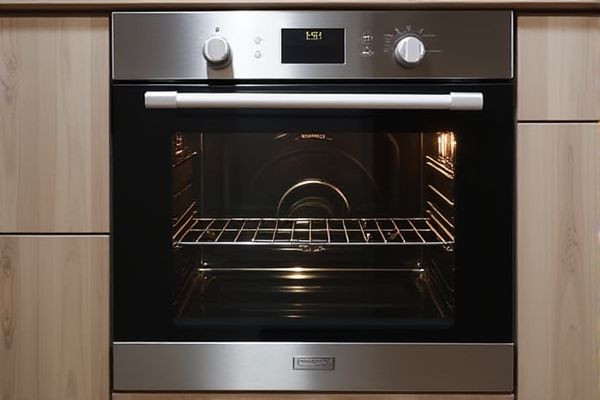
Wall ovens offer sleek integration and save kitchen space by being installed directly into the wall, while range ovens combine a stovetop and oven in one accessible unit, providing versatility for various cooking tasks. Discover which option best suits Your cooking style and kitchen layout by reading the rest of the article.
Table of Comparison
| Feature | Wall Oven | Range Oven |
|---|---|---|
| Installation | Built into the wall for a seamless look | Freestanding unit that includes both cooktop and oven |
| Space Efficiency | Saves floor space; ideal for smaller kitchens | Requires floor space, larger footprint |
| Cooking Flexibility | Typically oven only, paired with separate cooktop | Includes oven and integrated cooktop |
| Price | Generally higher due to installation complexity | Usually more affordable and easier to install |
| Maintenance | Harder to access for repairs due to built-in design | Easier to repair or replace since it is a single unit |
| Ergonomics | Wall-mounted at eye or waist level for easier access | Lower level; bending required to access oven |
| Design & Aesthetics | Modern, sleek; integrates with cabinetry | Traditional kitchen appliance look |
| Power Options | Available in electric or gas options | Available in electric or gas; combo cooktop types (gas, electric, induction) |
Introduction: Wall Oven vs Range Oven
Wall ovens offer a sleek, built-in design that saves kitchen space and provides independent oven control separate from the cooktop. Range ovens combine the oven and cooktop into a single unit, maximizing efficiency and often fitting well in smaller kitchens with limited counter space. Your choice depends on kitchen layout, cooking habits, and desired appliance integration.
Key Differences Between Wall Ovens and Range Ovens
Wall ovens are built into cabinetry, providing a sleek, space-saving design with flexible installation height, while range ovens combine the oven and cooktop in a single freestanding appliance. Range ovens offer easier installation and often lower upfront costs, but wall ovens provide more cooking capacity and customizable kitchen layouts. Temperature control and cooking performance are typically comparable, though wall ovens may allow for simultaneous use of multiple ovens within one kitchen setup.
Space and Design Considerations
Wall ovens save valuable kitchen space by being built into cabinetry, allowing for a seamless, modern design and freeing up floor area. Range ovens combine a cooktop and oven in one unit, requiring more floor space but offering convenience and a traditional appearance. Choosing between them depends on kitchen layout, desired aesthetic, and cooking habits.
Installation Requirements and Costs
Wall ovens require built-in installation within cabinetry, often involving professional carpentry and electrical work, leading to higher initial costs compared to range ovens. Range ovens combine a cooktop and oven in a single freestanding unit, simplifying installation with standard electrical or gas hook-ups, resulting in lower overall setup expenses. Homeowners must consider kitchen layout and electrical capacity when deciding between the higher installation investment of wall ovens or the more accessible setup of range ovens.
Cooking Performance and Features
Wall ovens offer precise temperature control and even heat distribution, making them ideal for baking and roasting with consistent results. Range ovens combine cooking and stovetop capabilities, providing versatility and convenience for multi-tasking in the kitchen. Your choice should consider whether you prioritize specialized cooking performance or multifunctional features for your culinary needs.
Energy Efficiency Comparison
Wall ovens typically offer higher energy efficiency by providing better insulation and targeted cooking zones, reducing heat loss compared to range ovens that combine cooktops and ovens in one unit. Range ovens often consume more energy due to shared heat within a larger appliance footprint, which can increase overall energy use during simultaneous cooking activities. Choosing a wall oven can optimize your kitchen's energy consumption, especially if you regularly use the oven separately from the cooktop.
Maintenance and Cleaning
Wall ovens offer easier maintenance and cleaning due to their built-in design, which reduces grease buildup on surrounding surfaces. Range ovens can be harder to clean since spills often drip onto the cooktop and floor, requiring more frequent wipe-downs. Your choice impacts how much time and effort you spend maintaining a pristine kitchen environment.
Accessibility and Ergonomics
Wall ovens offer enhanced accessibility with their installation at eye or waist level, reducing the need for bending and minimizing strain, making them ideal for users with mobility challenges. Range ovens require users to bend down, which can be less ergonomic and less convenient, especially when handling heavy dishes. The design of wall ovens promotes safer and easier access to food, improving overall kitchen ergonomics.
Pros and Cons of Wall Ovens
Wall ovens offer a sleek, built-in look that frees up floor space and can be installed at eye level for easy access, making cooking more ergonomic. They typically provide precise temperature control and even heating, ideal for baking and roasting, but may require professional installation and can be more expensive than ranges. Your choice depends on kitchen layout preferences and whether you prioritize separate cooking zones or the convenience of a combined cooktop and oven unit.
Pros and Cons of Range Ovens
Range ovens combine cooktop and oven in one appliance, offering space efficiency and convenience for multitasking during cooking. They typically provide a wide variety of burner sizes and oven capacities, but may limit kitchen design flexibility compared to separate wall ovens. Maintenance and cleaning can be more challenging due to the integrated cooktop, and the overall unit can be heavier and harder to install.
 homyna.com
homyna.com